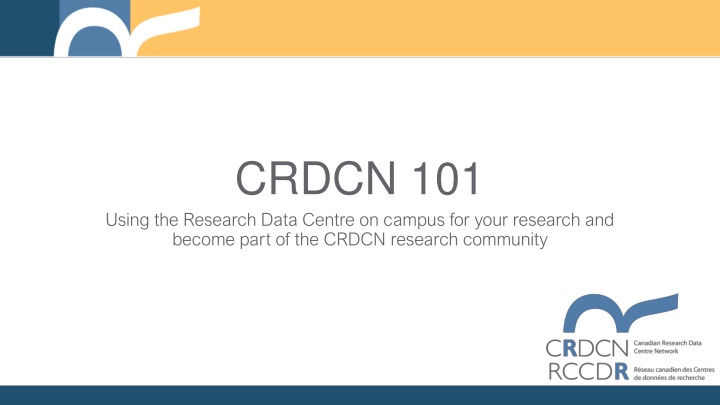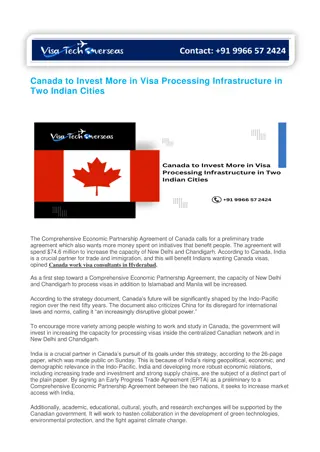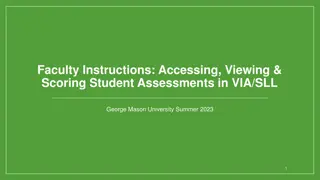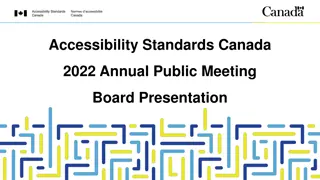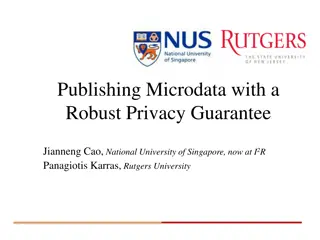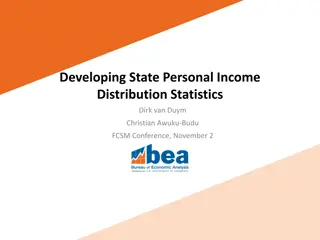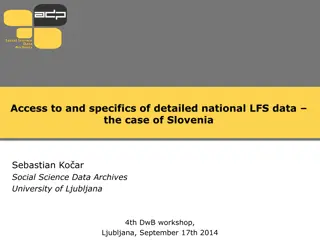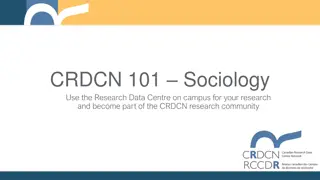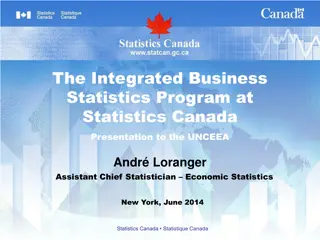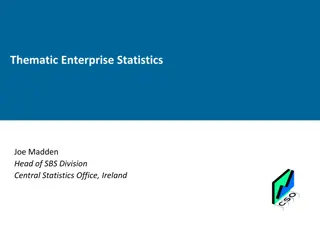Accessing Statistics Canada Microdata via CRDCN
The Canadian Research Data Centre Network (CRDCN) provides unique access to Statistics Canada microdata at Research Data Centres (RDCs) on university campuses across the country. RDCs securely house detailed individual-level data primarily sourced from Statistics Canada Survey Master files, ensuring privacy and confidentiality through strict data protection measures. With over 180 datasets available, researchers can explore a wide range of subject areas including health, education, labor, and more, contributing to valuable research within a secure environment.
Download Presentation

Please find below an Image/Link to download the presentation.
The content on the website is provided AS IS for your information and personal use only. It may not be sold, licensed, or shared on other websites without obtaining consent from the author.If you encounter any issues during the download, it is possible that the publisher has removed the file from their server.
You are allowed to download the files provided on this website for personal or commercial use, subject to the condition that they are used lawfully. All files are the property of their respective owners.
The content on the website is provided AS IS for your information and personal use only. It may not be sold, licensed, or shared on other websites without obtaining consent from the author.
E N D
Presentation Transcript
CRDCN 101 Using the Research Data Centre on campus for your research and become part of the CRDCN research community
What is CRDCN and what is unique about RDC data? The Canadian Research Data Centre Network (CRDCN) provides unique access to Statistics Canada microdata at Research Data Centres (RDCs) on 33 campuses across the country. RDC a secure facility where researchers access detailed microdata that come primarily from Statistics Canada Survey Master files. These are detailed individual level data. Increasingly, the RDCs are repositories of administrative records from a variety of sources including tax, employment insurance, social assistance, and hospitalization records. Individual data are protected: (1) names and ID numbers are removed; (2) access to data only permitted on secure systems that have no internet access; (3) researchers take training on confidentiality and privacy and Statistics Canada personnel use disclosure analysis to ensure that no individual, household or business can be identified.
Statistics Canada microdata subject area categories Agriculture and food Business and consumer services and culture Business performance and ownership Children and youth Construction Crime and justice Digital economy and society Economic accounts Education, training and learning Energy Environment Manufacturing Families, households and marital status Government Health Housing Immigration and ethnocultural diversity Income, pensions, spending and wealth Indigenous Peoples International trade Labour Languages Population and demography Prices and price indexes Retail and wholesale Science and technology Seniors and aging Society and community Statistical methods Transportation Travel and tourism
Examples of data sets available via CRDCN Examples of survey data: Aboriginal People s Survey, Canadian Community Health Survey, Canadian Survey on Disability, General Social Survey, Housing and Environment Survey, Labour Force Survey, Public Service Employment Survey. Examples of administrative records: Canadian Birth-Census Cohort, Canadian Cancer Registry, Canadian Census and Health Environment Cohort, Census, Discharge Abstract Data, Employment Insurance data, Education Labour Market Longitudinal Platform, HSUS/T1FF/Long-form census, Immigrant Database, Vital Statistics Examples of linked survey-admin data: CCHS-DAD-IMDB, LISA, LSIC (CCR, CVSD), NLSCY (T1), NPHS (T1,CVSD), SLID (T1/CVSD/CCR), YITS (T1FF) More than More than 180 data sets 180 data sets are available are available
RDC on the university campus Location on campus: [add location on your campus] [add to individual website for your local/campus RDC, if available] Data librarian(s) at the university: [add info here] How to access RDC data: 1) Ensure your project requires RDC data 2) Complete a project proposal 3) Request a letter from your supervisor 4) Upload your documents to the Microdata Access Platform
Find out more about CRDCN Visit the CRDCN website Sign up for the CRDCN newsletter Participate in the CRDCN annual conference and other training Search or browse the publications and reports to get to know the work of the 2000+ researchers in the CRDCN community Learn more about the data access continuum and Statistics Canada
